Hai Dang
CorpusStudio: Surfacing Emergent Patterns in a Corpus of Prior Work while Writing
Mar 16, 2025Abstract:Many communities, including the scientific community, develop implicit writing norms. Understanding them is crucial for effective communication with that community. Writers gradually develop an implicit understanding of norms by reading papers and receiving feedback on their writing. However, it is difficult to both externalize this knowledge and apply it to one's own writing. We propose two new writing support concepts that reify document and sentence-level patterns in a given text corpus: (1) an ordered distribution over section titles and (2) given the user's draft and cursor location, many retrieved contextually relevant sentences. Recurring words in the latter are algorithmically highlighted to help users see any emergent norms. Study results (N=16) show that participants revised the structure and content using these concepts, gaining confidence in aligning with or breaking norms after reviewing many examples. These results demonstrate the value of reifying distributions over other authors' writing choices during the writing process.
Choice Over Control: How Users Write with Large Language Models using Diegetic and Non-Diegetic Prompting
Mar 06, 2023



Abstract:We propose a conceptual perspective on prompts for Large Language Models (LLMs) that distinguishes between (1) diegetic prompts (part of the narrative, e.g. "Once upon a time, I saw a fox..."), and (2) non-diegetic prompts (external, e.g. "Write about the adventures of the fox."). With this lens, we study how 129 crowd workers on Prolific write short texts with different user interfaces (1 vs 3 suggestions, with/out non-diegetic prompts; implemented with GPT-3): When the interface offered multiple suggestions and provided an option for non-diegetic prompting, participants preferred choosing from multiple suggestions over controlling them via non-diegetic prompts. When participants provided non-diegetic prompts it was to ask for inspiration, topics or facts. Single suggestions in particular were guided both with diegetic and non-diegetic information. This work informs human-AI interaction with generative models by revealing that (1) writing non-diegetic prompts requires effort, (2) people combine diegetic and non-diegetic prompting, and (3) they use their draft (i.e. diegetic information) and suggestion timing to strategically guide LLMs.
How to Prompt? Opportunities and Challenges of Zero- and Few-Shot Learning for Human-AI Interaction in Creative Applications of Generative Models
Sep 03, 2022
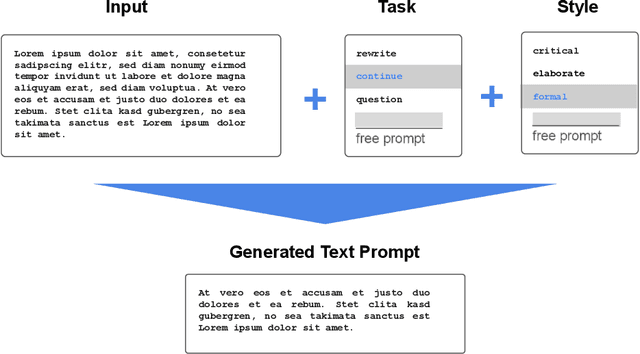
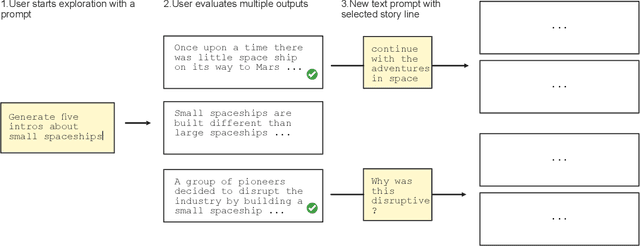
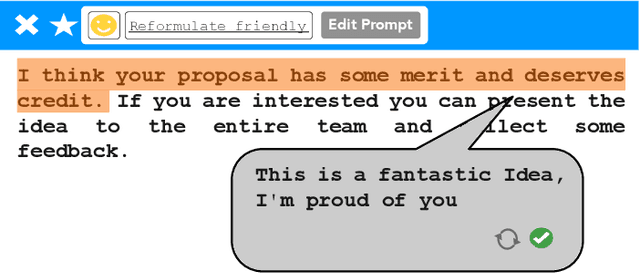
Abstract:Deep generative models have the potential to fundamentally change the way we create high-fidelity digital content but are often hard to control. Prompting a generative model is a promising recent development that in principle enables end-users to creatively leverage zero-shot and few-shot learning to assign new tasks to an AI ad-hoc, simply by writing them down. However, for the majority of end-users writing effective prompts is currently largely a trial and error process. To address this, we discuss the key opportunities and challenges for interactive creative applications that use prompting as a new paradigm for Human-AI interaction. Based on our analysis, we propose four design goals for user interfaces that support prompting. We illustrate these with concrete UI design sketches, focusing on the use case of creative writing. The research community in HCI and AI can take these as starting points to develop adequate user interfaces for models capable of zero- and few-shot learning.
Beyond Text Generation: Supporting Writers with Continuous Automatic Text Summaries
Aug 19, 2022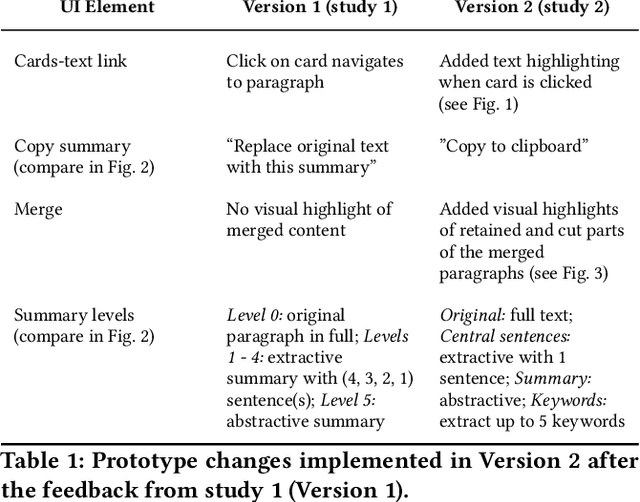
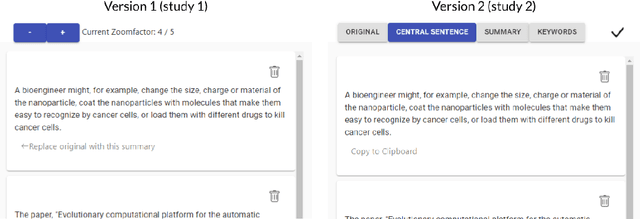
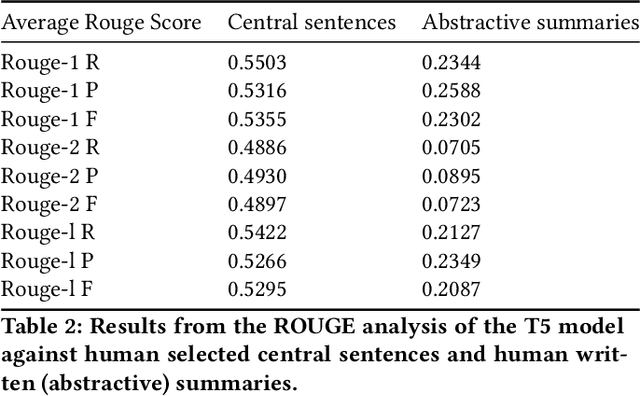
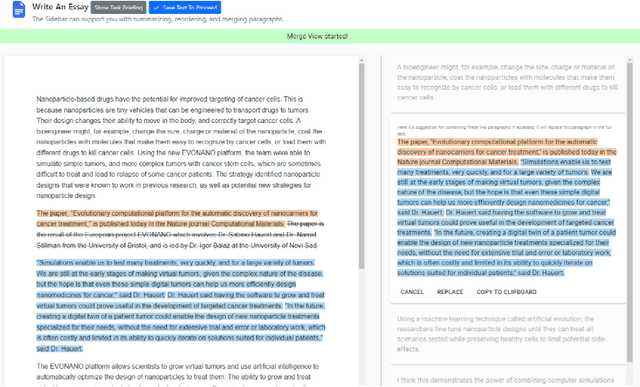
Abstract:We propose a text editor to help users plan, structure and reflect on their writing process. It provides continuously updated paragraph-wise summaries as margin annotations, using automatic text summarization. Summary levels range from full text, to selected (central) sentences, down to a collection of keywords. To understand how users interact with this system during writing, we conducted two user studies (N=4 and N=8) in which people wrote analytic essays about a given topic and article. As a key finding, the summaries gave users an external perspective on their writing and helped them to revise the content and scope of their drafted paragraphs. People further used the tool to quickly gain an overview of the text and developed strategies to integrate insights from the automated summaries. More broadly, this work explores and highlights the value of designing AI tools for writers, with Natural Language Processing (NLP) capabilities that go beyond direct text generation and correction.
Suggestion Lists vs. Continuous Generation: Interaction Design for Writing with Generative Models on Mobile Devices Affect Text Length, Wording and Perceived Authorship
Aug 01, 2022

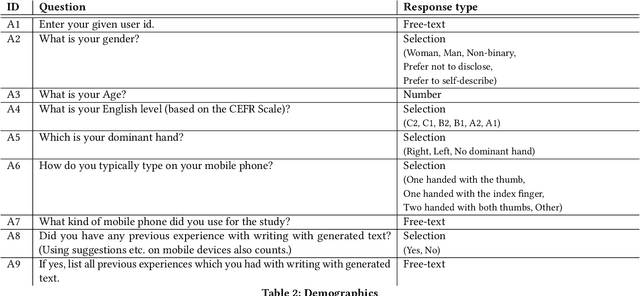

Abstract:Neural language models have the potential to support human writing. However, questions remain on their integration and influence on writing and output. To address this, we designed and compared two user interfaces for writing with AI on mobile devices, which manipulate levels of initiative and control: 1) Writing with continuously generated text, the AI adds text word-by-word and user steers. 2) Writing with suggestions, the AI suggests phrases and user selects from a list. In a supervised online study (N=18), participants used these prototypes and a baseline without AI. We collected touch interactions, ratings on inspiration and authorship, and interview data. With AI suggestions, people wrote less actively, yet felt they were the author. Continuously generated text reduced this perceived authorship, yet increased editing behavior. In both designs, AI increased text length and was perceived to influence wording. Our findings add new empirical evidence on the impact of UI design decisions on user experience and output with co-creative systems.
GANSlider: How Users Control Generative Models for Images using Multiple Sliders with and without Feedforward Information
Feb 02, 2022



Abstract:We investigate how multiple sliders with and without feedforward visualizations influence users' control of generative models. In an online study (N=138), we collected a dataset of people interacting with a generative adversarial network (StyleGAN2) in an image reconstruction task. We found that more control dimensions (sliders) significantly increase task difficulty and user actions. Visual feedforward partly mitigates this by enabling more goal-directed interaction. However, we found no evidence of faster or more accurate task performance. This indicates a tradeoff between feedforward detail and implied cognitive costs, such as attention. Moreover, we found that visualizations alone are not always sufficient for users to understand individual control dimensions. Our study quantifies fundamental UI design factors and resulting interaction behavior in this context, revealing opportunities for improvement in the UI design for interactive applications of generative models. We close by discussing design directions and further aspects.
Nine Potential Pitfalls when Designing Human-AI Co-Creative Systems
Apr 01, 2021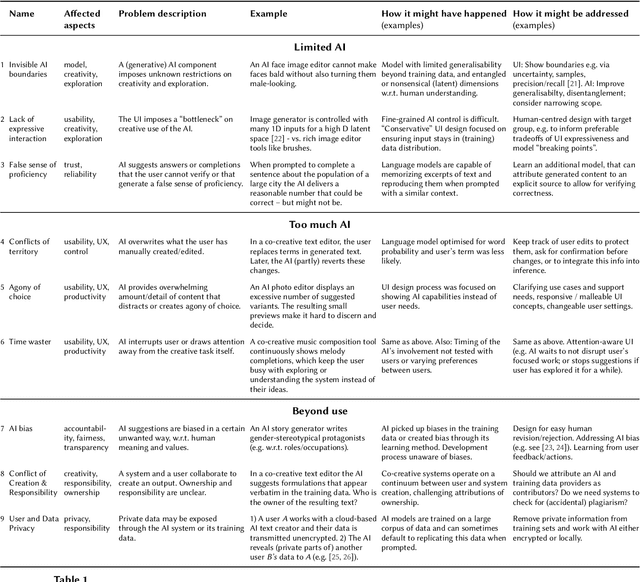

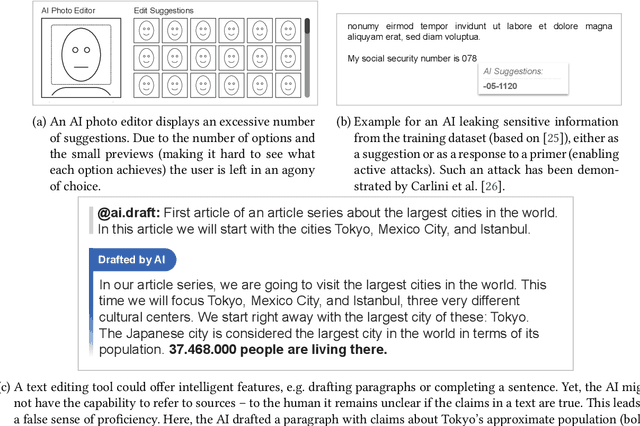
Abstract:This position paper examines potential pitfalls on the way towards achieving human-AI co-creation with generative models in a way that is beneficial to the users' interests. In particular, we collected a set of nine potential pitfalls, based on the literature and our own experiences as researchers working at the intersection of HCI and AI. We illustrate each pitfall with examples and suggest ideas for addressing it. Reflecting on all pitfalls, we discuss and conclude with implications for future research directions. With this collection, we hope to contribute to a critical and constructive discussion on the roles of humans and AI in co-creative interactions, with an eye on related assumptions and potential side-effects for creative practices and beyond.
 Add to Chrome
Add to Chrome Add to Firefox
Add to Firefox Add to Edge
Add to Edge